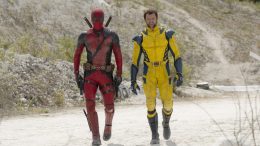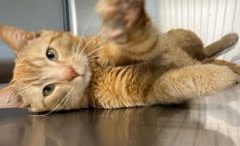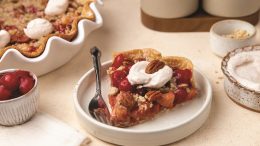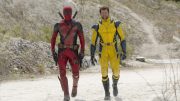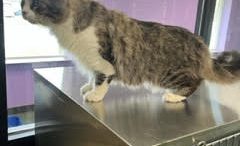More Canada geese have been heard and spotted overhead. Different birds are stopping by the feeder and other places.
The most notable observation from this blogger’s feeder is an influx of American goldfinches still in their winter plumage. It is not uncommon to see and hear at least 20 or so of the chatty finches a day.
A red-winged black bird has been visiting the feeder, but hasn’t stayed long enough for a photo op and an American woodcock was heard calling or “peenting” last week. Attempts have been made photograph the unique game birds, but have come up short – and very blurry.
The feeder has also played host to the usual visitors, the black-capped chickadees, white-breasted nut hatches, downy woodpeckers, the tufted titmice and other are winter birds. While they are considered winter birds, some of these birds do live in the area year round.
In the March-April newsletter put out by the Seneca Rocks Audubon Society, longtime member Gary Edwards has a list of early arrival dates for returning species of birds. It is noted that the list is only to be used as a guide as the records are the earliest sightings the birds have been seen in the region.
Some of the early arrivals include the red-winged blackbird on Feb. 10; the American woodcock on Feb. 21, the sandhill crane on March 4, the Eastern phoebe on March 6, the common loon on March 17, the yellow-bellied sapsucker on March 22 and the chipping sparrow on March 31. The list and the newsletter are available on the society’s website at www.senecarocksaudubon.org.
Several photos have surfaced on Facebook over the past weekend of sandhill cranes in the Linesville area.
While the feeder visitors are changing ever so slightly, more snowflake blossoms are showing up. More posts of crocuses have popped up too on Facebook, but this blogger’s crocuses appear to still be enjoying their long winter’s nap.
Spring blooms
Some Facebook users were a little concerned about their crocuses and wondered if they would weather the recent snowfalls and cold temperatures.
An article posted on www.gardeningknowhow.com, titled “Crocus Winter Flowering: Learn About Crocus In Snow And Cold” by Bonnie L. Grant, certified urban agriculturist, provided some reassurance about the hardiness of some of the first bloomers of spring.
“Spring blooming plants need chilling to force the bulb to sprout. This necessity makes them naturally tolerant of freezes and snow, and minimizes the chance of crocus cold damage,” the article said.
Grant basically wrote that snow is a little bit of a benefit to crocus blooms as it acts as an insulator.
She said cold damage is possible in new buds because they are more sensitive.
Grant added that people could cover the plants if they wanted.
“Covers also keep the plants from being crushed by heavy snow, although, in most cases, the flowers will spring back up once the heavy white stuff has melted,” she wrote.
“Because crocus cold hardiness goes down to -20 degrees, an incident cold enough to hurt them would be rare and only in the chilliest zones,” Grant said in the article.
Fortunately there are heavy snows are in the forecast, but approximately 2 to 3 inches is expected from Tuesday through Wednesday of this week for Venango County.
Video time
Meanwhile, the trail camera has been busy shooting video of the neighborhood deer herd’s interactions.
The week netted approximately 65 clips which are 30-seconds a piece. The time involved in filtering through all these clips might mean a switch back to still photos is warranted.
Due to the early morning snowfalls, the video clips look like old black and white film.
The videos, however, provided a look at the interactions between the deer that are not always obvious on the still photos.
Some jostling for pecking order was seen as different deer vied for a place at a mineral lick.
The herd is mostly located around the block when during the last few frames of the video a deer on the left decides to make a move and clearly a deer, who seems to appear out of nowhere from the right, disapproves.
What the experts say
“The social organization of the whitetail is largely matriarchal,” according to a Wildlife Note found on the Pennsylvania Game Commission’s website.
The note said that “although large numbers of deer are sometimes seen together in feeding or wintering areas, these associations are usually temporary and do not reflect the same strong ties as family associations. The most common social group is an adult doe, her fawns and her yearling female offspring. Sometimes three or four generations of related does are present in a family group.”
However, when fawning season approaches the adult does effectively “kick out” their yearling offspring who are left on their own for the summer, according to the Wildlife Note.
As for bucks, after the breeding season in late January they form loose associations of usually two to four animals, the note continued.
These bachelor groups remain together throughout most of the winter and summer month and dissolve in September when the rut starts again, according to the game commission.
An article on deer behavior posted on www.huntingpa.com, said that “deer are social creatures and, much like man, have a definite social structure.”
“These rules within the deer herd demand a method of communication whereby deer can react and respond to each other, establish herd hierarchy, or pecking order, and mutually warn each other of potential danger,” the post said.
However the post added that “many encounters of deer during the early spring and summer are for the purpose of establishing dominance.”
The post went on to explain the different skirmishes which take place between the different sexes — bucks against bucks and does against does.
“Once dominance is established … the deer then quickly recognize each other in relation to their respective position in the pecking order. Harmony can then exist between the members in the herd until an animal, because of age, condition, or other factors, necessitates a change,” the post said.
Trouble maker
However, neither posts provided any clues as to why one deer decided to tamper with the trail camera.
At first it just looks like a white screen, then movement is detected. Whiskers come and go and at one point in the clip.
Obviously one of the herd has some spring fever and a healthy dose of curiosity.
A Walk in the Woods contains photos from newsroom staffer Anna Applegate’s daily jaunts around her neck of the woods. Tagging along on the treks are dogs, Buford, Sherman and Sadie, and goats, Kyle and Kennedy. Applegate manages the Good Times and can be emailed at bigdogs.thederrick@gmail.com.













